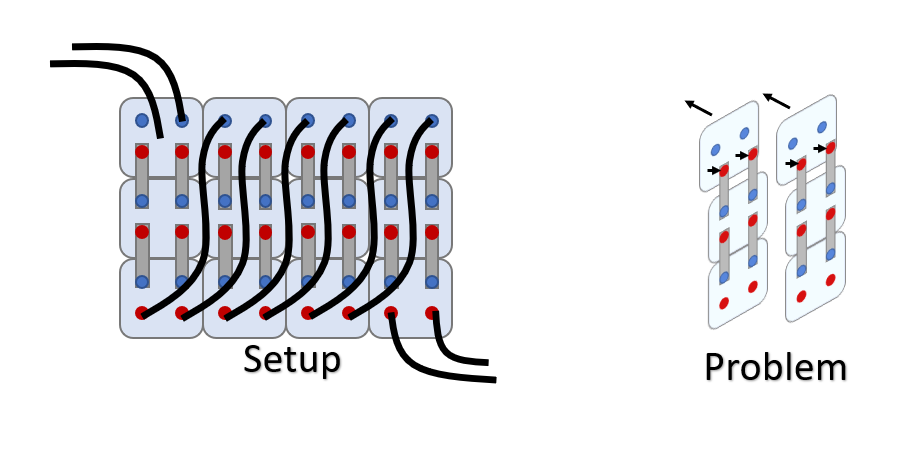 Running 24V system with 12x 2V 1500ah Mastervolt traction gel batteries, all on their side. Batteries are connected via connector plates Inherited this ESS, it's located under the house on clay soil and some structural plywood. 100kg each, not surprisingly the ground has settled a bit over the last two years and the top two middle batteries have slid back. The terminal connection held strong and the plate/terminals have been pulled out a couple of centimeters.
Running 24V system with 12x 2V 1500ah Mastervolt traction gel batteries, all on their side. Batteries are connected via connector plates Inherited this ESS, it's located under the house on clay soil and some structural plywood. 100kg each, not surprisingly the ground has settled a bit over the last two years and the top two middle batteries have slid back. The terminal connection held strong and the plate/terminals have been pulled out a couple of centimeters.
Voltage on the other 10 are all reading fine and balanced, but the two damaged ones were less than 1V each. They've obviously discharged but haven't been able to charge up to the same level as the rest of the system. Now the system sits at about 26V with the sun on and balances out at about 20.5V. I've disconnected the two damaged batteries and there is no difference in the performance of the system.
The question: best way to fix? Seems like battery balancers (active) would take too long and likely mess the other batteries up. My current plan is to run a 20V system until the working 10 discharge down, reconnect damaged batteries and charge up, disconnect damage batteries and discharge the 10, on and on until the 2 damaged ones are back at an acceptable level.
Another idea was to try and trickle charge the 2 batteries separate to the rest of the system, but nothing in the market to charge 2V or 4V systems, and I'm worried that hooking up to a trickle charge solar panel would be more trouble than it's worth? Not going to move them out (it's very, very hard and inaccessible) but could get some looong wires from a small panel. Would monitor this rather than using an MPP controller.
Anybody with experience on this one?
- Home
- Anonymous
- Sign in
- Create
- Spaces
- Grafana
- Node-Red
- Unsupported topics
- Questions & Answers
- Modifications
- Communauté francophone
- Deutschsprachiger Bereich
- Preguntas en Español
- Explore
- Topics
- Questions
- Ideas
- Articles
- Badges
question
2V Battery Damage
It's almost an impossibility the cells are salvageable.
- They've sustained physical damage
- They've sat in a deeply discharged state for an extended period.
#2 in particular essentially ensures that they are a total loss.
I assume you've reconfigured the charging for the reduced cell count. If you haven't, you are destroying the cells. GEL batteries must not be charged to higher voltage.
Fingers crossed.
1.1V is a dead battery.
0.24V is already rotting in hell.
1.9V after charging overnight = dead
If you were certain these batteries were perfectly operational a few days ago, I might agree with the potential that they can be salvaged, but I get the impression that it could have happened weeks/months ago.
Related Resources
Additional resources still need to be added for this topic
Faults with Victron equipment are best discussed directly with your dealer - this can be formalised with this support request form.
question details
27 People are following this question.
